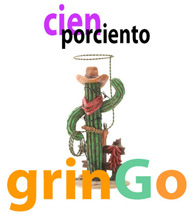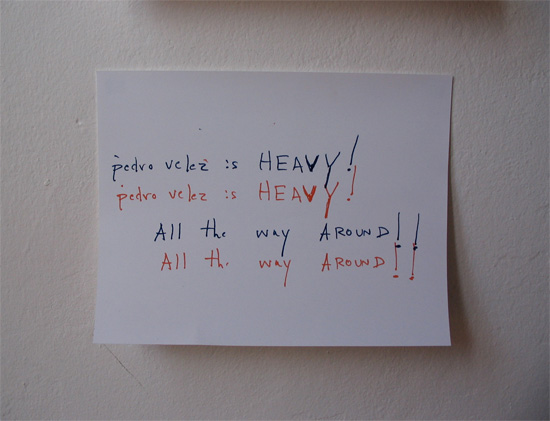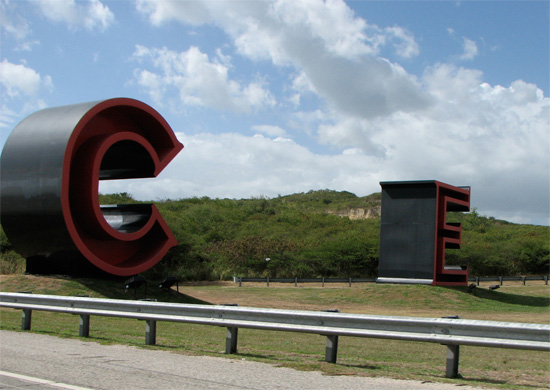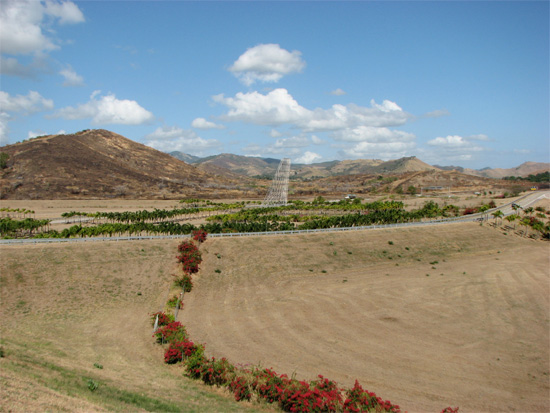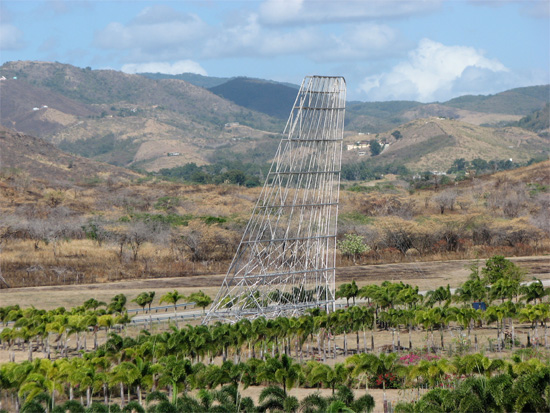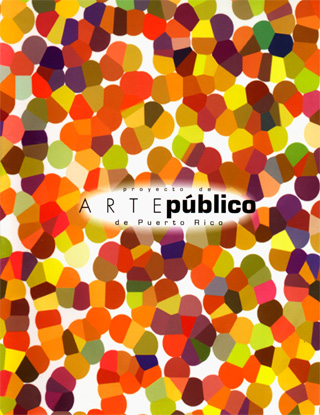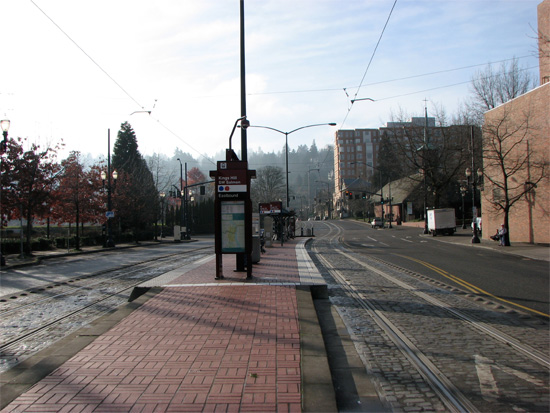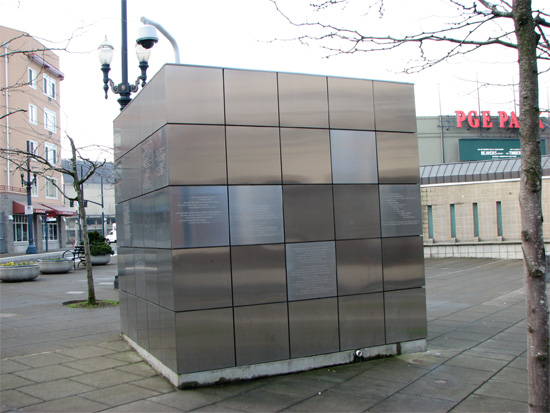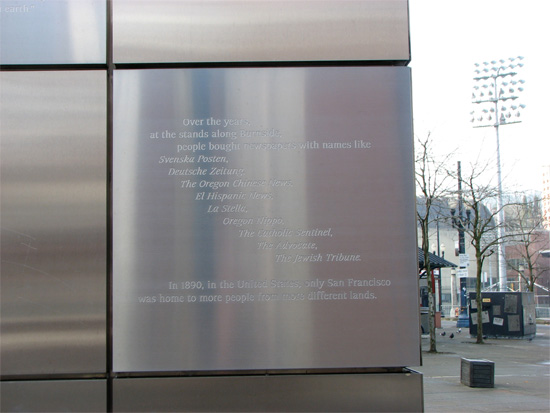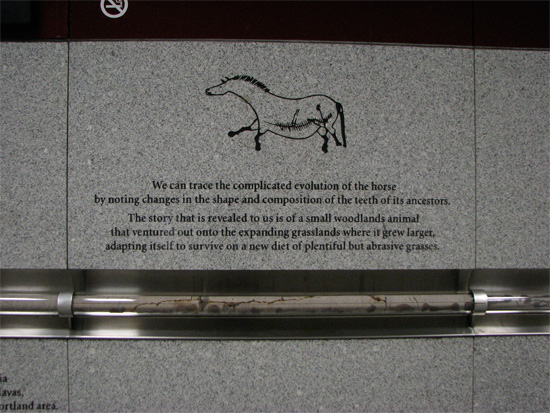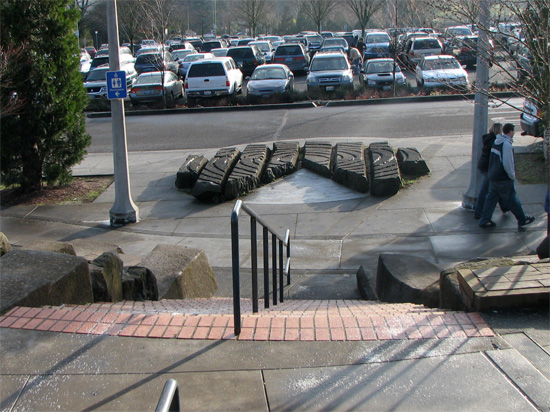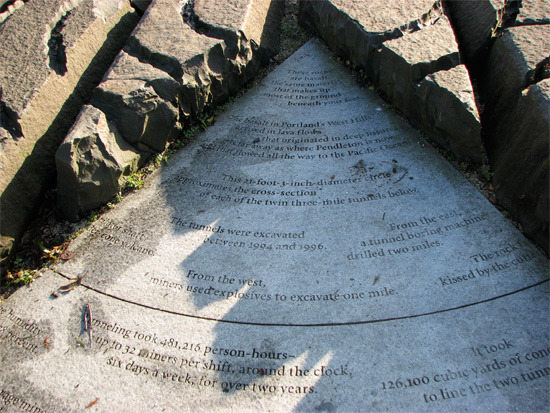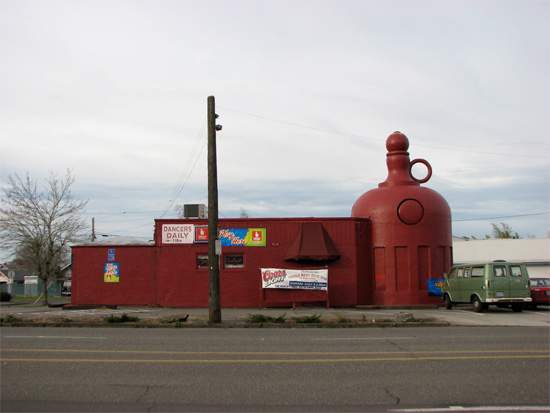|
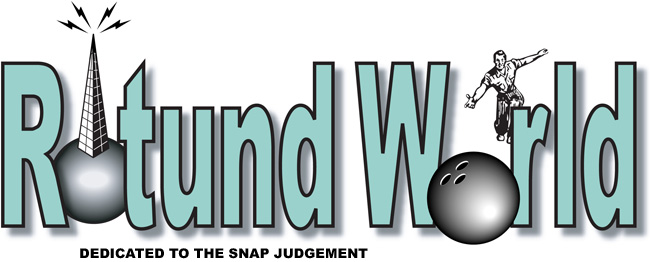
Public Is as Public Does
Pedro Vélez—hallowed be the name of the Dark One—is fond of saying that the florescence of blogs, online magazines, wikis, and other vessels of cyberblather in Puerto Rico during the last year or so has wrought a momentous change in the way art is talked about. It has affected the manner in which the local art community, highly fragmented though it is, acts—especially in regard to publicizing exhibitions and other events—and reacts. Witness the presence of something like evaluative—one could even say, at last, critical—writing in such blogs as Autogiro, Trance Líquido, Conboca, and Vélez’s own continually bellowing tropical storm system, Box Score. Besides Vélez, two voices in particular have emerged to perfume the air with tangy umbrage and no small amount of actual thinking. Autogiro’s Javier Martínez, though not as active as he once was, still gets his licks in, and Arnaldo Román and Lilliam Nieves over at Trance Líquido are proving to be topnotch screed-issuers. Vélez—who, let’s face it, is always exaggerating—attributes the unexpected force of the recent, and tediously ongoing, brouhaha surrounding Museo de Arte Contemporáneo to this phenomenon. The museum’s initial efforts to drum up support for a budget increase went out as a mass email, and the gathering of forces in opposition to the baldly political tenor of that ploy flew out across the web at light speed. One of the best parts of this collective digital snit was listening to video-pest Teo Freytes—“Don’t mind me,” he said—as he taped Abdiel Segarra and other young Turks while they literally stalked the museum’s beleaguered director in her own lair. Well, Vélez could have something this time, as he sometimes does. (His best-and-worst-of- the-artworld list of 2007 is posh and stinky at the same time, sort of like the man’s more successful experiments in art.) When he first made this claim, it seemed like the usual fuzzy-headed Vélez hyperbole and self-aggrandizement. But the other day we happened on a website that pretty much changed our minds, a new project by Carmen Olmo-Terrasa, who’s the brains and considerable muscle behind the omnibus art website ¿Donde Veo Arte? Olmo-Terrasa’s new creation is a blog—called something like ¿Donde Veo Arte? the Blog, though we’re none too sure about the name—which is committed to documenting the lamentable state of public art in Puerto Rico. For us, enamored as we are of civic endeavors and muralistic doings and big honking artworks in the landscape, stumbling upon this virtual exposé was a bolt from the blue, like swallowing a big forkful of lechón with a tad too much salsa picante. Basically, Olmo-Terrasa’s project encourages readers to photograph public artworks—which, judging by what we’ve seen so far, seem to be perishing en masse—and post the images on her site. She started the blog after discovering a number of sadly neglected, vandalized, or otherwise deteriorating works during a walk around San Juan. As we say, public art is a theme that’s dear to us, and spurred by Olmo-Terrasa’s indignation, we started to do a little digging into the history of Puerto Rico’s relatively young but prodigious program. This is an auspicious convergence of circumstances since we’ve been flogging the public art program in Portland, Oregon, for several Rotund episodes; hinting about, showing provocative snapshots, and promising big revelations to come. What we’d like to do instead is tell you what we’ve learned about the big ambitions of the Puerto Rican artsphere in the early part of the new century, the mysterious and apparently dismal fate of those plans, and then, if there’s any gas left in the Rotund tank, take a gander at the brighter fortunes of public art in the Pacific Northwest. Before we do, however, we can’t let go of Pedro Vélez quite yet, to whom, we feel, we were a bit unfair when we as much as said that Vélez, in the persona of the blogmeister at Box Score, is “a complete knucklehead and a bigtime loser.” Actually, what we wrote was that we would never say such a thing about the Boxster, but we said it in such a way as to imply that’s exactly what we think. Tut, tut. We only think that from time to time, and ironically, just at about the moment we uttered those words, Vélez was proving us one- hundred-eighty degrees wrong. Just by reproducing New York Times art reviews, the extensive, often readable twaddle of art critic Jerry Saltz, and other highish-tone echoes from the world beyond the horizon, Vélez is providing a much-needed service to the hermetic artworld of Puerto Rico, whose gaze almost always drifts navelward. This is not to stint his occasional forays into the essay form, or the semi-reasoned argument, or however you want to characterize his “thought pieces,” as opposed to the unseemly taunting and spleen he is sometimes known to stoop to. His recent review of the highly repellent San Juan-area performance by Justice Yeldham, who uses as his instrument shards of broken glass and is, as you might expect, a flesh-mortifier of the spurting blood and ripped flesh variety, is not exactly hoot-provoking, but it does make the Aussie noiseman seem, well, “serious” would be one way to put it. Vélez does a nice job of setting the scene—a Río Piedras-area dive called Diplo—and in addition to describing the performance in queasy detail, he puts Yeldham in the context of both the noise movement and important modern and contemporary avant-gardists such as the Vienna Actionists and the likewise disgusting Paul McCarthy. We like it when Vélez writes up a storm about something that interests him, when the jets of irritation get turned down low and the man begins to think aloud.
But where were we? Certainly as far from the potty Vélez doorstep as possible. We were speaking of public art, and promising to tell you what we learned about the efforts of a Puerto Rican governor, Sila María Calderón, who helped pump $25 million into an island- wide program of astonishing reach, beginning in the year 2002. We often see some of the fruits of that endeavor from the highway as we tool between San Juan and Ponce—there are the infamous red Ponce letters just outside La Ciudad Señorial, and Charles Juhász- Alvarado’s Jardín alado (Jardín en tránsito) greets us every time we pass by where Highway 53 splits off toward Guayama in the east; a tall, thin tower of shiny piping rising out of a grove of palms. If it’s nighttime and we’re lucky, the tower is lit with neon tubes, a mysterious signpost pointing to nowhere and nothing in particular. Against the proliferating billboards and brightly glowing roadside communities, it’s like a coded message from the Great Beyond. Or maybe the Great Satan.
We’ve always liked coming upon Juhász-Alvarado’s so-called garden. The tower was conceived to represent the tail fin of a big jet airliner and the palms configure the outline of a plane’s fuselage, so that seen from above—imagine you’re on a flight landing at Ponce’s Mercedita airport—the airplane motif is obvious. According to the artist’s original proposal, there was also a planting of bougainvilleas which traced a giant insect superimposed on the plane and headed in the opposite direction, but try as we might, we’ve never seen anything like a proliferation of red flowers as we zoom by. Maybe the bougainvilleas were fried by the island south’s notorious heat. Something else you should know about Juhász-Alvarado’s artwork is that it was originally planned for the environs of San Juan’s Luis Muñoz Marín International Airport but, according to the extremely exasperating, long-out-of-date, Flash-heavy public art website, the Federal Aviation Administration (FAA) put the kibosh on that idea. So it sits in an arid patch of countryside far from any airport. Once when we were heading out of Ponce town for the big city, a traveling companion remarked that the work makes no sense out there in the middle of nowhere, but we begged to differ. That’s precisely the beauty of public art. To us, who travel that stretch of highway frequently, the ghostly garden, and the Ponce letters for that matter, mark milestones on our journey. The first time we passed by, at night when the thing was blinking out of the darkness, one of our passengers—a different one—assured us that seen from just the right angle, the bulwark was supposed to represent the Eiffel Tower. For the next several trips we’d squint and crane our necks and look away and look again, but the Parisian landmark never popped into view. And no wonder.
By the time we found out the rather more mundane meaning of Jardín alado, we’d grown quite fond of it, not only as a perpetual bafflement but as a sign that our journey was in its last stages, just one more blazing straight-away to sad old Ponce. Or a revés, that we were just leaving the provinces, and the great, hustling metropolis lay more than an hour away. Most curious of all, our reaction to Jardín alado (Jardín en tránsito) seems to be almost exactly what the public art program’s architects had in mind from the beginning. Miguel Rodríguez Casellas, the program’s director at the time it was conceived and for much of its construction, wrote extensively about the project, both in the call for proposals issued by the island government in 2002 and in an article he published in Archivo de Arquitectura Antillana in 2005. These documents reveal a sweeping, boldly worded, almost millennialist vision of the project; first in its unprecedented contribution of government funds for art —$25 million in one fell swoop, which Rodríguez Casellas characterizes as a “radicalizing” of the role of government in cultural development—and secondly in the effect it would have on how contemporary art is made and how it’s received by the public. He credits the program with “taking art outside the exclusive system in which museums, galleries, and collectors determine its value,” a breathless echo of the Mexican muralists’ idea that their efforts were part and parcel of the Mexican Revolution and would put an end to individualistic studio work forever. And Rodríguez Casellas repeatedly postulates what for many artists is a kind of elusive fever-dream: that Puerto Rico’s public art program could rise above the old imperatives of state-sanctioned art—which favor the folkloric, the hidebound, and the old guard—bringing irony, ambiguity, critical thinking, and other “usually prohibited” values of so-called high art to bear in the public sphere for the first time. The program was conceived to, among other things, he writes, “construct critical commentaries about public spaces from the point of view of the artists’ subjectivity.” This is heady stuff. It’s what we mean when we say that our fanciful reaction to Jardín alado is probably just about right in the eyes of those who impelled its creation. Rodríguez Casellas was still using that kind of language, though he’d adopted a considerably more defensive stance, when he spoke to Primera Hora in mid-2005 as the project was nearing completion. In the article, he as much as begged the legislature to remain committed to the few still-unfinished works in spite of mounting public criticism about cost overruns. We can well imagine—as we must, since we haven’t found anyone with firsthand knowledge and the cojones to speak publicly about it—that as the economic situation of the island began its inexorable plunge into the fiscal toilet, the pols who’d at least not opposed the huge outlay for something as “non-essential” as art began to use the program as a cudgel to whip and thrash each other and any hapless witness who happened to be nearby. Such as Rodríguez Casellas, we’re guessing. Whatever really went on, the gap between the high-flying rhetoric of three years ago and the disgraceful condition in which we find many of the works which so much brainpower, toil, and optimism created is vast and bafflingly empty. Whatever happened? The project drew some of the most familiar names in Puerto Rican contemporary art—Victor Vázquez, Rafael Ferrer, Annex Burgos, Antonio Martorell, Dhara Rivera, Susana Espinosa, Eric Schroeder Vivas, Aarón Salabarrías, and Rafael Rivera Rosa are among the native sons and daughters who participated—and the island unquestionably benefited from a passel of new monuments as well as some improbably bad ideas.
The story of public art in Puerto Rico is something of a national saga—as yet unfinished, we hope—and in these dreary times, when a dream of an art economy outside of the gallery- museum-art-spectacle nexus seems laughably naive . . . Let’s start again. In these desperate times, when the thought of any art economy at all in Puerto Rico is a grim joke, in poor taste, a callous rebuke to any youth with aspirations, the cocksure, can-do nerve, the out-and-out balls of that proposal and its brief, shining moment of realization read like the unlikely coincidences of a Victorian novel. We encourage you to take a gander at the call for proposals here, in English, and to pore over Rodríguez Casellas’s notes and an interview with him in the issue of Archivo de Arquitectura Antillana we noted above. Also well worth reading is the 2001 law establishing a one-percent-for-art program for Puerto Rico, in which all public construction was required to set aside a percent of its budget to commission or purchase artworks. This is where it all started. There’s a vivid lesson here for anyone with the remotest interest in the vagaries of the island’s contemporary art scene. Not that we cherish the story’s every jot and syllable. Personally—and we’ll allow it’s a matter of taste—we found the project way overdetermined in regard to what it demanded of the artists it invited to participate. You’ll have to read the documents to fully understand what we’re talking about. The organizers listed preferred sites for proposals, which in itself is not a bad thing, but combined with all the visionary hokum and eyewash, those artists who’d had little experience with monumental work, the ones who certainly distrusted government, the habitually wary individualists, all faced an onerous burden of expectations. Another serious problem was the program’s lack of detailed planning for the artworks’ long- term maintenance. This lapse seems unforgivable in light of all the planning, expense, and effort that went into the works’ fabrication, and we’re witnessing its terrible price. On the other hand, you cannot blame big thinkers for thinking big, and in some ways the public art program’s approach was truly innovative and wonderfully useful. Its commitment to helping artists deal with contracts and other business practices is a precision model for the way that art makers at any level should be educated. It doesn’t look to us like Puerto Rican artists are well-schooled in basic real world details—nor, increasingly, are there trustworthy dealers around to guide them—much to their careers’ peril. In the end, did $25 million buy a lot or a little? Concrete figures about the ultimate disposition of the Puerto Rican public art program are not easy to find. The original call for proposals listed almost a hundred sites, including places for nineteen works on the tren urbano alone, but we haven’t determined which of those were actually completed. We do know that two high-profile projects—a skateboard park designed by artist Vito Acconci and an urban renewal project on Avenida Roosevelt by the Dutch design firm West 8— never happened. Otherwise it’s hard to estimate what kind of bang the program got for its many bucks.
In Portland, Oregon, meanwhile, a few years before Sila Calderón’s public art legacy was a gleam in some boricua eye, the Rose City embarked on a very similar program to place artworks in the stations of a newly planned rapid transit system. Called Westside Light Rail, the system envisioned a commuter train which would carry passengers from the city center to a suburb whose final destination was eighteen miles away. The construction plans were breathtakingly advanced in certain respects—one section of the line had to cross some hills surrounding the city which are, in places, solid basalt, and the builders ultimately decided to bore through the rock to make a pair of three-mile-long tunnels—but one of the most unusual aspects of Westside Light Rail was the decision to include a group of artists on the system’s design team. According to our reading of the documentation, the system’s twenty stations each got an artistic treatment. The whole project cost $963 million—in 1998 dollars—of which a mere $2 million was budgeted for art. That is, if you don’t count $10 million which was earmarked for landscaping, and it looks to us as if landscaping was frequently part of the art. In addition to the eight design team members, there were eighteen artists involved directly in creating the installations, plus a “resource panel” of ten people from the community, such as a wildlife ecologist who, among other things, advised the design team about urban wetlands which lay in the path of the train’s construction. Compared to the heated rhetoric of the Puerto Rican scheme—an aromatic brew of concerns about national identity and grandly iconoclastic notions of artmaking—the ideological view from the Pacific Northwest was simple and mild: the art would honor the history, culture, and landscape along the line. To our way of thinking—and pay attention steely-eyed corruption seekers: not only was Portland our terreno for over thirty years, but we were involved in both jurying the process and creating one of the artworks—Westside Light Rail delivered both less and considerably more than its counterpart in Puerto Rico. It would be much fairer, perhaps, to compare the tren urbano portion of the Puerto Rican project to Westside Light Rail—they were of nearly identical scope—but our point has more to do with general attitude than with execution, more with tone than with mechanics. That point being? The point being that the less ideologically extravagant, less demanding, more artist- oriented approach of the Oregon project—a bottom-up rather than top-down process, to cop an awful but occasionally illuminating cliché—created, if nothing else, a progenitor for a whole series of subsequent public art projects. All other things being equal—and it would be the height of arrogance and stupidity to argue the merits of individual artworks here and there, and not our thing in any event—you have the glaring, unfortunate fact that no such destiny seems to await island artists in the near term, and the legacy of the noble experiment of not so long ago lies moldering under the Puerto Rican sun. Visit Carmen Olmo-Terrasa’s site from time to time to remind yourself of this sad truth, to burnish it in whatever way you can, for however much good it will do you. Meantime, we’d like to show you a couple of examples of what the $2 million bought the people of Oregon. They are, in our quite frankly prejudiced minds, fine achievements of site-specificness, and they owe their success to the deliberate process which the artists themselves were key in creating and moving along. At least that’s our understanding from the hazy remove of almost a decade, a distance of many thousand miles, and, who knows, perhaps a mild case of early-onset dementia.
This is a stainless steel cube, with detail, which houses some of the communications equipment for the system, but in artistic terms it’s the medium for concise chapters in the city’s history as imagined and written by Robert Sullivan. The cube’s typography was designed by John Laursen. The work sits on a small triangular traffic island defined by the train’s incoming and outgoing tracks, whose motif is a “speaker’s corner,” complete with benches and bronze podiums.
From an engineering standpoint, the Washington Park Zoo Station is perhaps Westside Light Rail’s most significant achievement. The station itself lies two-hundred-sixty feet below the surface, making it—at least at the time of the documentation’s writing—the deepest transit station in North America. It’s accessible by elevator and is the only stop in the system’s three-mile-long tunnels. Below ground the station features several artworks, including a core sample within a tempered glass tube which runs like a three-hundred-foot- long banister along an etched granite wall. The core sample was created by engineers when they began drilling down during the station’s design phase, and it represents sixteen million years in the geologic history of the surrounding land. All along the granite wall there are diagrams and texts which tell something of the history of the core sample as it proceeds through time. Bill Will was the artist responsible for the overall project, and he also worked with John Laursen on the typography.
At the surface of the zoo station, shards of a big slab of basalt lie on the ground, scored by deep grooves. This sculpture represents a cross-section of the rock drilled out of the hills to create the system’s tunnels, and the grooves show how the giant tunnel boring machine which was used to drill through the basalt made its marks. The first contact between drill and rock was called “the kiss” by the drillers, and this is the artwork’s name. The Kiss is part of an array of works in a plaza above the underground station, created by a team of engineers, artists, architects, and landscape architects. The typography in the work’s front-most niche, relating the story of The Kiss and other factoids about the project, was created by none other than the ubiquitous Mr. Laursen. One station we won’t be able to show you—though we regard it as perhaps the best example of Westside Light Rail’s relative success as an artistic enterprise—is the Hawthorn Farm Station. The artwork at this station consists of little more than sound installations in a conventional-looking kiosk. But among the sounds are those of living creatures piped in from a nearby urban wetlands, which was preserved during the maelstrom of system construction thanks in part to the efforts of one of the project’s resource panel members, urban ecologist Esther Lev. In other words, in this case the artists performed a small ecological miracle which, if not startling in art historical terms, was nonetheless an act of incredible delicacy and grace in a process largely characterized by muscle and speed. We ask you, shouldn’t art take a little time out from the grubby business of commerce and its unquenchable longings for riches and fame, to once in awhile try to save the planet?
Whew. Next time we will not be so long-winded. We want to show you another, different kind of public monument in which Portland’s master of typography, John Laursen, once again has a role. It’s Portland’s Holocaust Memorial, one of several landmarks in the city which have no connection to local or regional government and in some cases are not really monuments at all, just part of the city’s architectural and cultural past. A strip joint called the Sandy Jug Tavern? We mean it. How about that Museo de Arte Contemporáneo? Look back if you dare, but remember the Biblical tale about the pillar of salt.
|
